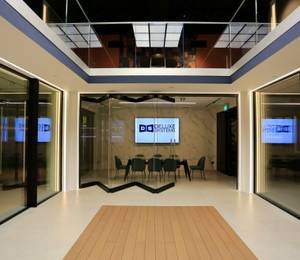Milan, Italy – COIMA SGR and its partners Covivio and Prada Holding have revealed that Skidmore, Owings & Merrill will design the Olympic Village for the 2026 Milan-Cortina Olympics as part of the updated Porta Romana railway yard master plan. SOM was selected to design the village following an international competition involving 27 groups comprised of 71 studios from nine different countries.
Developed by COIMA SGR and its partners in collaboration with the Milano-Cortina Foundation, the Municipality of Milan, and the Lombardy Region, the Olympic Village will transform the Porta Romana district, creating a sustainable urban community and offering a powerful new model for Olympic facilities to serve post-Olympic social goals. Thanks to innovative sustainability features, the village will target minimal environmental impact in accordance with NZEB (Nearly Zero Energy Building) requirements.
Designed first and foremost to become an integral part of Milan's urban fabric, the village encompasses a set of public green spaces, the transformation of two historic structures, and six new residential buildings that will serve Olympic athletes in the short term. Following the Olympics, the athletes' homes will be reused for student housing; the park and railway side buildings near the Olympic Square will be used for affordable housing; and the Olympic Village Plaza will become a neighbourhood square, with shops, bars, restaurants, and cafes planned at street level, along with outdoor space for farmers' markets and other community events.
The new buildings take architectural inspiration from the historic buildings of Milan, while featuring striking, contemporary materials and dramatic communal terraces. Shaded by vertical plantings, these terraces serve as bridges between the buildings, becoming signature gathering spaces and outdoor study rooms for students and lending the complex a sense of energy and life on every level. The integration of greenery within the outdoor areas will contribute to the neighborhood's climate resilience, and also create space for urban farms that enable on-site food production.
The entire Olympic Village is designed according to the principles of a smart and sustainable city, creating a complex that is at once connected and self-sufficient. The village's mechanical systems will tie in to the precinct's loops, yet passive cooling strategies, solar panels, and rooftop gardens — among other features — will ensure that more than 30 percent of the energy utilised will be produced on site. Stormwater will be collected on site and reused, with a reduction in the use of drinking water by over 50 percent and a CO2 reduction of 40 percent for heating and cooling. In addition, the new buildings maximise the use of sustainable materials, from the mass timber structure of the residential buildings to low-embodied carbon facade materials.
Construction of the Olympic Village is scheduled to be completed by July 2025.












